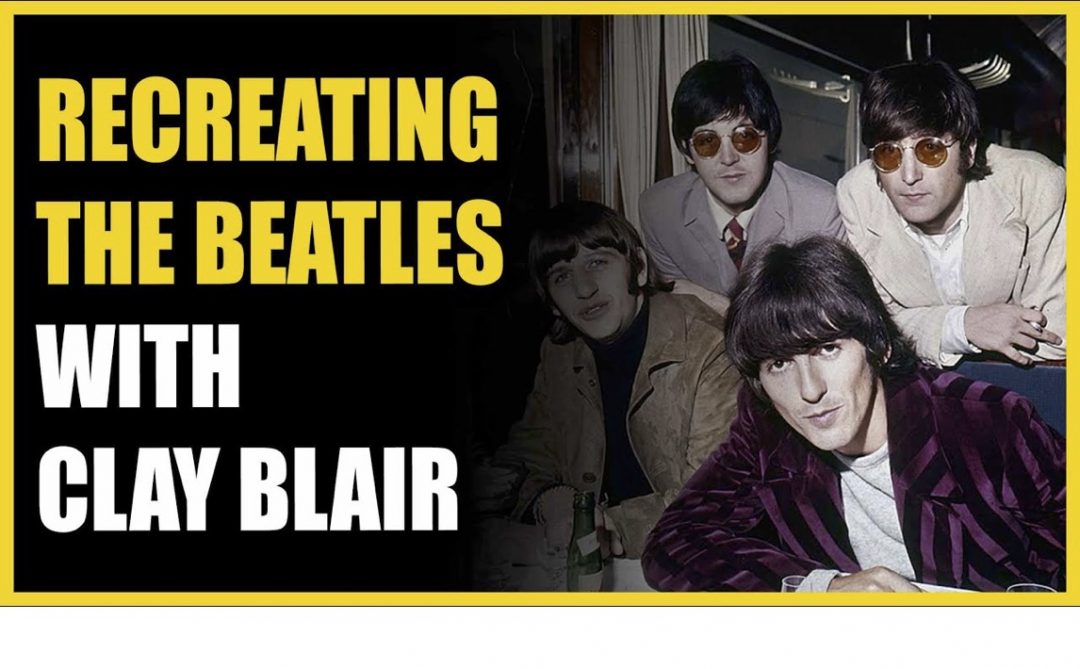Clay Blair is the head engineer and owner of Boulevard Recording in Hollywood–and a huge Beatles fan, which we’ll discuss shortly! Clay chatted with Produce Like a Pro a short while back and gave us a tour of his wonderful studio. Formerly known as “Producer’s Workshop,” Boulevard is famously the studio where Bob Ezrin and Pink Floyd recorded overdubs, mixed, and mastered The Wall. For any punk fans, many of Epitaph’s artists recorded there in the ’90s. Bands like Blink 182, The Offspring, and The Melvins all drew inspiration from the incredible space.
In this piece, Clay set out to capture the tones heard on The Beatles’ Abbey Road; more specifically, those found on “Come Together.” He did so using many of the original instruments, microphones, mic preamps, and miking techniques, like AKG D19s and Chandler REDD.47 valve preamps. The Chandler amps are faithful reproductions of the 47s found in EMI REDD.51 consoles at Abbey Road Studios!
“Come Together” was first released in September 1969 as the opener of Abbey Road. It was mostly written by John Lennon, but is credited as Lennon-McCartney. At the time, Timothy Leary contacted Lennon about writing him a campaign song to use during his run against Ronald Reagan for governor of California. Leary’s campaign came to a halt when he was imprisoned for marijuana possession, and Lennon couldn’t see his work pan out as a campaign song anyway. Lennon himself said the following about it:
‘Come Together’ was an expression that Leary had come up with for his attempt at being president or whatever he wanted to be, and he asked me to write a campaign song. I tried and tried, but I couldn’t come up with one. But I came up with this, ‘Come Together,’ which would’ve been no good to him – you couldn’t have a campaign song like that, right?
The song was again released in October 1969 as a single alongside “Something.” Overall, it performed well, hitting #4 on the UK charts and reaching the top in the US after its release. Of course, we’ve all heard it now! Here, Clay did a phenomenal job of capturing those now iconic sounds.
Examining the equipment and techniques The Beatles used on “Come Together”…
Unusual by today’s standards, Clay recreated engineer Geoff Emerick’s drum miking techniques which were used on nearly everything from Sgt. Pepper’s to Abbey Road. The setup consisted of a modest 7 microphones: five AKG D19s, a D20, and a Neumann KM 56 (a 54 was used here). One D19 served as an overhead; one was used on the hi-hat; and the remainder were positioned on the bottom of the toms. The D20 was placed on the kick, and the KM 56 miked the snare–also on the bottom! Who are we to argue with Geoff Emerick?
While the recording setup varied slightly from song to song on Abbey Road, “Come Together” was recorded on a 4-track tape machine. The 7 drum tracks would have been summed to a single track with a Fairchild on it, and that was that! There weren’t even any room mics used for the drums. Any room tone heard was actually bleed from the guitar, bass, or vocal microphones. The Beatles, like many great bands of the era, tended to record live as a band, with each member baffled off from the other…far from the isolated performances we tend to capture these days, and yet it sounded incredible! Now, we’ve come to associate the sound of bleed with bands like The Beatles and The Rolling Stones, whether we’re consciously aware of it or not.
McCartney favored the classic Rickenbacker 4001 on “Come Together.”
On bass, McCartney used a Rickenbacker 4001 through a Fender Bassman. Clay noted the 4001’s remarkable sustain which can be heard on “Come Together,” differentiating it from his iconic and frequently used Hofner. McCartney would have also used a 2×12 speaker cabinet, though Clay substituted a 2×15. The most shocking thing about the bass rig is that it was all miked by an AKG C-12. Talk about an expensive mic to use in a way we’d hardly even consider these days!
During sessions for the White Album in 1968, Eric Clapton gave George Harrison “Lucy”: a red 1960 Les Paul that he was frequently seen using at Abbey Road. He also had a ’64 SG, and Clay played a very similar 1965 in this demonstration. For amps, the band would have used Fender Twin Reverbs at the time, though a Princeton also captures their tone nearly dead-on. A Neumann M267 miked up the original rig, while Clay opted for a 269 that worked incredibly well here.
Though we are unable to show Clay’s tracking process here for copyright reasons, we hope you’ve enjoyed a behind-the-scenes look at the equipment and recording techniques that once made The Beatles hit, “Come Together.”
Source: Wikipedia
